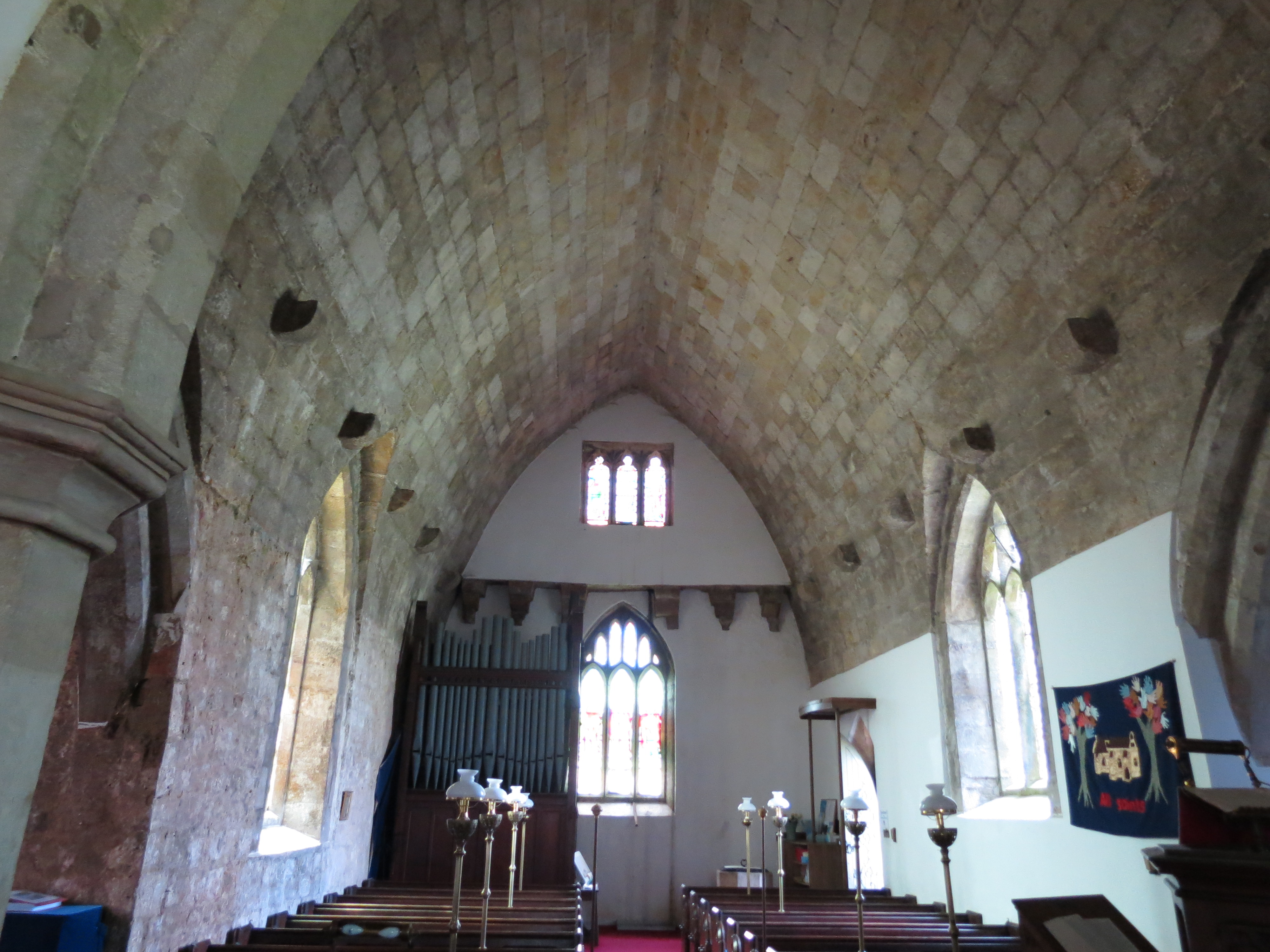Defensible Churches (Background: Boltons)

Cumbria has a unique group of fortified churches, built for defence against the Scots
"One of the architectural sensations of Cumbria". That is how the Grade I Listed Building of All Saints Church at Boltongate is described in The Buildings of England, on account of its dramatic stone vaulted (and timber-free) roof to the nave, erected c.1400 to ensure the church could not be burned down. On the outside of the church, a high stone parapet walk-way allowed the church to be used as a look-out, watching the sands of Solway, some fifteen kms away, for any signs of incursions by the Scots. The nearby Rectory, a Grade II listed building, is in effect a Tower House, characterised by extremely thick walls, which similarly dates to the late 14th/early 15th century.
There had been an earlier, Norman, church on the site, but it may have been destroyed by one of the Scots raids, either that of Robert Bruce in 1322, or a later one in 1387. Ferguson (1878) was the first to suggest the patron of the church, responsible for its new and unique design features, was Baron Ralph Neville of Raby (1364-1425), lord of the manor of Boltons from 1388, 1st Earl of Westmorland (1397), Governor of Carlisle (1385) and joint Warden of the West March (1386), in which capacity he was responsible for defence of the Anglo-Scots border. Earlier in his career he had served in France, and may have seen there stone vaulting such as he was to introduce to Boltongate. Certainly there was nowhere in England he could have seen anything similar.

Stone funnel vaulting, nave, looking west
Perhaps more conventionally fortified is the church at Newton Arlosh, on the Solway estuary, which was granted a licence to crenelate in 1304 (work had started on building the church in 1303). The church is now dominated by a square fortified west tower with very thick walls, and a two-bay fortified nave.

Newton Arlosh church
Higher up the estuary is Burgh-by-Sands, at the southern end of the main ford over the Solway, and as such clearly at risk from border incursions. During the 14th century fortified towers were added to the west and east of the 12th century church, with the west tower having very thick walls, with arrow slits in the bottom stage, while the parapet is battlemented. The church is famous as the site of the lying-in of Edward I after his death at Burgh while taking part in an invasion of Scotland.
These three churches are the best examples of the Cumbrian phenomenon of the defensible church. All three were fortified in the 14th century, and it is generally assumed that this activity was a response to the ‘Three Hundred Years War’ between England and Scotland that commenced at the close of the 13th century. In each case, the motive was no doubt purely individual and local: but collectively they formed part of the defences of the Solway plain, and indeed the whole of England, with ‘watch and ward’ being maintained from the towers, looking out for hostile forces, whether a small party of Border Reivers – or the entire Scots army.
Text by Bill Shannon
Photos of Boltongate and Newton Arlosh churches by Bill Shannon
References:
Hyde, Matthew; Pevsner, Nikolaus (2010) [1967], Cumbria, The Buildings of England, New Haven and London: Yale University Press, pp. 158–159
Charles J Ferguson, ‘Bolton Church, Cumberland’, Tr CWAAS vol 3 (1878), 1:8
Brooke, C.J. Safe Sanctuaries: Security and Defence in Anglo-Scottish Border Churches,. Edinburgh, John Donald.(2000)
Church of All Saints, Boltongate: Grade 1 Listed Building, Entry Number 1312157
The Rectory, Boltongate: Grade II Listed Building, Entry Number 1144465

